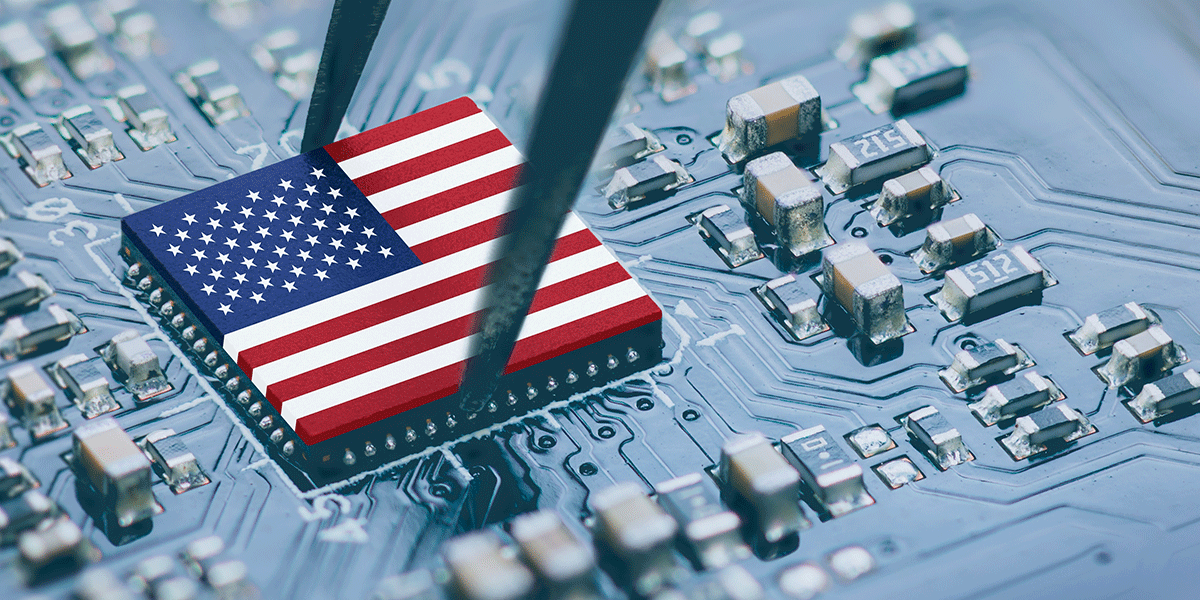The Herculean Task of Reshoring Electronics Manufacturing to the US

Although tariffs clearly encourage manufacturing to return to the United States, this is not an easy task. Building up the kind of manufacturing capacity the U.S. once had will take decades, as it did in China.
This week, we’ll look at why it’s so hard to reverse a trend that started with RCA’s dissolution in the 1940s and hasn’t changed in a few years: making manufacturing a low priority for the government. My Product of the Week, a hydrogen-powered horse robot from Kawasaki called Corleo, will be our final item, and if it makes it onto the market, it should be significantly superior to a motorcycle. It’s hard to move manufacturing back to the US. The call to “bring manufacturing back” is deeply ingrained in the American psyche due to anxieties about global supply chain vulnerabilities, national security concerns, and nostalgia for a supposedly golden age. This discussion centers on electronics manufacturing, which encompasses everything from consumer electronics to intricate semiconductors. Yet, despite the political rhetoric and popular support, reshoring complex electronics manufacturing to the U.S. borders on impossible in the near term. As a result of decades of global economic shifts, strategic investments made by rivals, and fundamental differences in the infrastructure, workforce, and policy environments, the reasons are numerous and deeply ingrained.
Why China Still Leads Electronics Manufacturing
China methodically built itself into the world’s workshop for decades, particularly for electronics. This dominance wasn’t accidental; it resulted from strategic planning and the cultivation of several key advantages that the U.S. currently cannot match.
Scale and Dynamics of Workforce Despite being the initial catalyst, the straightforward “cheap labor” argument is now oversimplified and is frequently cited. Chinese labor costs have risen significantly. However, efficiency and adaptability that are difficult to duplicate are created by the sheer size of the workforce and decades of experience, particularly in electronics assembly and production processes. More importantly, manufacturing ecosystems were able to be created on a scale never before seen thanks to this large labor pool. This scale is exemplified by Foxconn City in Shenzhen, which has hundreds of thousands of employees working on a single integrated campus. There is no comparable model in the United States. The existing skilled and semi-skilled labor force provides the foundation and adaptability necessary for electronics’ rapid product cycles even as automation grows.
Purpose-Built Infrastructure
China didn’t just attract factories; it built the entire logistical ecosystem to support them. Dedicated manufacturing zones with dependable utilities, extensive high-speed rail networks for domestic component transportation, dense clusters of suppliers, and massive, modern ports that are optimized for container shipping make up this infrastructure. A robust supply chain ecosystem enables rapid iteration, troubleshooting, and production scaling thanks to the close geographic proximity of component manufacturers, mold makers, testing facilities, and assembly plants. While extensive, the U.S. infrastructure is geared mainly toward consumer logistics and lacks the hyper-specialized, manufacturing-centric density found in regions like the Pearl River Delta or the Yangtze River Delta. In the United States, re-creating such an integrated infrastructure would take decades and enormous investment. Adoption of Robots and Automation Counterintuitively, China is also a leader in manufacturing automation. Chinese manufacturers, frequently aided by government initiatives, have invested heavily in robotics and advanced manufacturing technologies, rapidly increasing their robot density, in response to rising labor costs and the desire for greater precision. For high-volume, high-precision tasks, they have the scale for manual assembly when necessary and increasingly sophisticated automated lines. Chinese companies are able to remain competitive in a wide range of manufacturing complexities thanks to this combination of advanced high-precision automation and flexible manual labor capacity. Despite having advanced automation capabilities, the United States lags behind China in the scale of deployment within integrated electronics ecosystems. Aggressive Government Financial Support
The Chinese government has treated the development of its manufacturing sector, especially in strategic areas like electronics, as a national priority.
Direct subsidies to manufacturers, low-interest loans from state-owned banks, tax incentives, government funding for research and development, land grants, and sometimes less tangible benefits like expedited regulatory approvals have all been used to support this goal. This coordinated, long-term state backing created an environment where companies could invest heavily in capacity and technology with reduced financial risk, fostering the sector’s rapid growth. Organizations like the IMF have analyzed this approach as having significant trade implications.
Years-long exodus from the United States Manufacturing
The rise of China’s manufacturing prowess coincided with a decades-long decline in U.S. manufacturing capacity, particularly in electronics assembly and component production — excluding some high-end areas like advanced semiconductor design. This wasn’t a sudden collapse but a slow bleed driven by corporations seeking lower production costs and focusing on design, marketing, and software — the higher-margin ends of the value chain.
The consequences are profound. Factories closed, equipment was sold off or scrapped, and crucially, entire generations of skilled manufacturing workers retired or moved into other sectors. There was a decline in the intricate supply chain networks that supported complex manufacturing. Institutional knowledge — the practical expertise in running complex production lines, managing supply chains, and training technicians eroded.
Rebuilding this involves more than just building new structures; it also involves reviving an entire industrial ecosystem with its human capital and specialized knowledge base. As analysis suggests, millions of jobs were lost over decades. It stands to reason that it will take decades to rebuild if the will and resources are consistently available, given that it took decades to dismantle.
Immense Hurdles of Rebuilding: Time, Investment, and Policy
The practical difficulties are staggering, even if the United States embarked on a serious effort to reshoring. Construction takes time. It takes many years to build a large, cutting-edge manufacturing facility like a modern semiconductor fabrication plant (fab). It requires careful calibration and testing, extensive construction, the installation of highly specialized equipment, the selection of the site, and intricate environmental and zoning permits. A single fab can take three to five years or more, from groundbreaking to full production, costing upwards of $15-$20 billion, assuming no significant delays. The United States would need not just one but dozens of such large facilities as well as countless smaller suppliers to make a dent in electronics reshoring—a massive undertaking that would take decades. Need for Consistent, Long-Term Rewards Building these facilities requires colossal capital investment. To ensure a return on investment, businesses making such investments require certainty regarding the long-term economic environment. It is common to talk about incentives like tax breaks or tariff relief. However, U.S. policy has been highly volatile, particularly in regards to trade and tariffs, resulting in uncertainty that disrupts predictability and discourages investment. Based on changes in geopolitical circumstances or trade negotiations, tariffs enacted by one administration may be modified, eliminated, or even adjusted monthly. For a factory with a 10–20-year payback period, the risk that crucial incentives could disappear within a single presidential term is a major deterrent.
Investors want policy stability that lasts well beyond typical election cycles, which has been hard to guarantee in the US system in the past. The financial risks of massive reshoring investments are frequently too high for private businesses to bear on their own in the absence of credible, long-term, and possibly even legislatively locked-in incentives. The United States lacks skilled electronic workers. Beyond physical infrastructure and policy, there’s the human element.
Skill Deficit Decades of de-emphasis on manufacturing have led to a significant mismatch between the skills needed for advanced electronics manufacturing and those prevalent in the U.S. workforce.
Modern electronics production requires highly skilled technicians proficient in robotics, process control, cleanroom protocols, quality assurance, specialized equipment maintenance, and engineers with deep expertise in manufacturing processes.
The supply of skilled manufacturing technicians and engineers has significantly decreased, despite the United States’ strengths in design and engineering. China, on the other hand, produces significantly more engineers and technicians annually, many of whom are specifically trained for manufacturing positions. However, it remains difficult to align skills with global industry requirements. To meet this demand, long-term investment and a shift in educational and cultural priorities will be required to rebuild America’s vocational and technical training systems. Divergence in the Workforce Individual career choices and public opinion are starkly different. Surveys consistently show overwhelming public support (around 80%) for bringing manufacturing back to the U.S., a sentiment that holds across party lines and contexts. However, only 20%–25% of respondents say they would think about working in a factory. This disconnect is a reflection of shifting career goals and outdated perceptions of factory work as monotonous, despite improvement in some studies.




